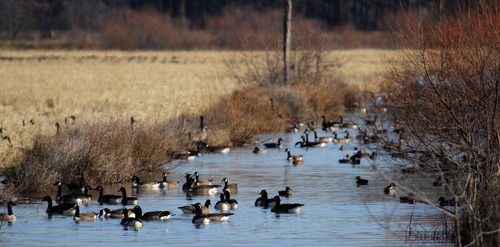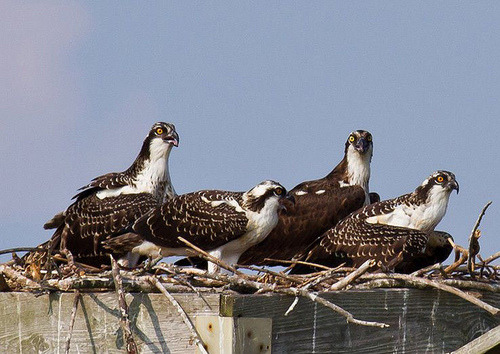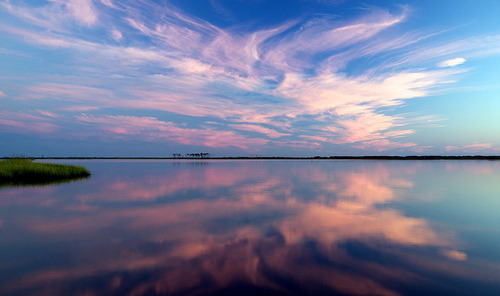Blackwater Refuge
The Blackwater National Wildlife refuge looks, from google earth, like the arteries of a great, mossy giant- the low forest and marshes drained and refreshed by thin, branching veins of tidal tributaries. As your eyes adjust, attempting to discern the difference between green canopy and greyish water, you feel disoriented- how can so much water and so little land still make up a destination? So extensive and switchbacked are Blackwater’s myriad tributaries, that within its 27,000 acres is 1/3 of Maryland’s tidal wetlands. This is alpha and omega of Chesapeake marshes- a place where land and water overlap, interconnected and symbiotic.
The guts, coves, and marshes that stitch together the damp high ground reflect the wild, backwoods nature of the place- “Otter Pond,” “Snarepole Gut,” “Wolfpit Pond,” “Hog Rooting Pond.” Blackwater, the names suggest, is not a refuge for humans, but an untamed relic from the Chesapeake’s less civilized past. A walk along the numerous nature trails is an immediate reminder that you are, indeed, the interloper from the tamed modern world. Bleached, rasping marsh grasses barely part above you as your sodden shoes squelch through cake batter mud. Cicadas scream in loblollies and, far above, eagles wheel in funnel shapes, following the warm drafts up, up.

Winter sunset at Blackwater.
The refuge is fed by the tannin-rich water of the Blackwater River and the Little Blackwater, which derive their distinctive tea-colored tint from the ancient peaty soils of the region’s pine woods. Once a haven for Nanticoke Indians and a hiding place for Harriet Tubman and other runaway slaves as they journeyed north to freedom, Blackwater is now a sanctuary for the wildlife that teems within its verdant 25,00 acres of brackish tidal wetlands and evergreen and deciduous forests. Over 250 different species of wildlife are concealed within rustling treetops and the flattened dunes of salt meadow hay: eagles, falcons, hawks and osprey, the meaty silver bulk of the Delmarva Fox squirrel, and in the mud-baked tidal flats, the spiked fur and distinctive tail drag-marks of the omnipresent muskrat.

Where land and water intertwine at Blackwater.

Muskrat tracks at low tide.
Seasonally Blackwater is visited by fluttering flocks of migratory waterfowl in the tens of thousands, which feast on the refuge’s thick underwater grasses and paddle contentedly in its icy shallows. Birdwatchers and photographers are drawn to the spectacle, documenting the mouth-dropping ascendance of snow geese in flickering white drifts, the glossy chestnut plumage of the dapper canvasback, the aloof red-tailed hawk winking across the path of the sun. Countless photographs in galleries, posted on Flickr and Instagram, are visual testimony of the feathered eye candy so brilliantly on display at every Blackwater creek and cove.

Migratory waterfowl overwintering on a Blackwater inlet.

A nest of spring-hatched osprey.
Established in 1933, the Blackwater National Wildlife Refuge was created during a period when the enormous flocks of migratory waterfowl that had once visited the Chesapeake along the Atlantic Flyway were recovering from a deep decline, due to overzealous harvesting. Now protected from most forms of market hunting after the Migratory Bird Treaty Act of 1918, refuges like Blackwater provided rich habitat for waterfowl while restricting access to the still-legal sport hunting.

Photo by Chris Koontz/Flickr
Today, Blackwater National Wildlife Refuge has been referred to by the Nature Conservancy as the “Everglades of the North” -a protected, jewel-like place that has produced a dynamic, deeply interconnected Chesapeake environment seething with biodiversity. But even as the refuge shelters hundreds of species within in its drowned forests and slow, quiet inlets, it is also threatened by sea level rise and erosion. The Chesapeake Bay reclaims more than 300 acres of Blackwater’s low land each year. Through the efforts of the Conservation Fund, higher land surrounding the refuge has been purchased and added on to the original acreage, creating a cushion for the inevitable slow creep of the water level.

A songbird clings to a reed of marsh grass.
Dissolving into the ever-widening maw of the Bay, Blackwater is a paradise for a protected population of wild things with feathers, fins, and fur. Even as its marsh tumps fade below the waterline, Blackwater’s loblollies are ornamented with heron rookeries, its grasses cloud with insects, and its water churns with spawning fish runs. While the future of Blackwater’s shores might be imperiled, for now, it is still a vibrant sanctuary where life goes on untroubled by the glowering clouds of climate chamge. Push through the wet feet and mosquito bites, and a visit might reward you with glimpses of a untamed Chesapeake past , as elusive and slippery as an otter, darting just below the water’s surface.
